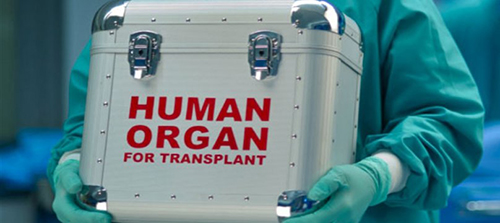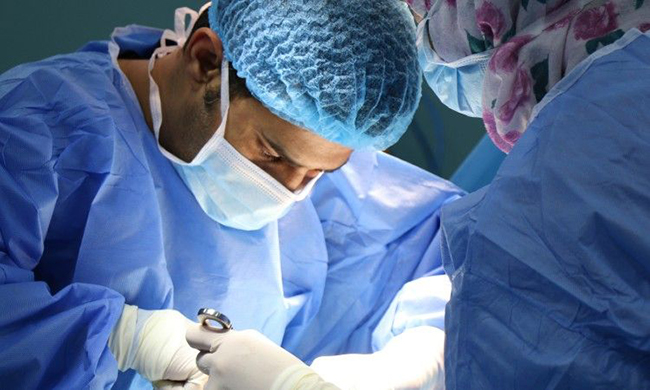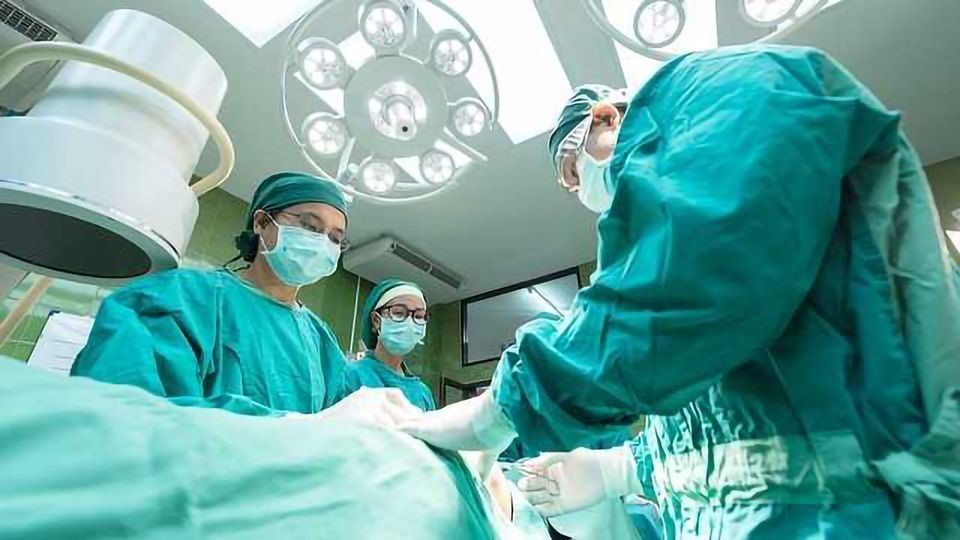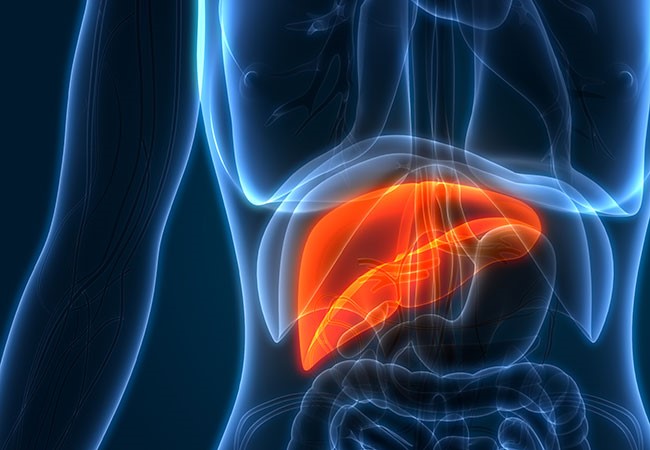
Transplantology is a branch of medicine that studies issues related to organ transplantation, as well as the prospect of artificial organ creation in the future.
What does every patient need to know about transplantology?
Basic terms:
• Donor –an organism from which organs or tissues are taken for transplantation.
• Recipient –an organism to which tissues or organs are transplanted.
• Transplantation, which comes from the Latin 'transplantare' (to transfer into place), can replace organs or tissues which are missing or which have been irreversibly damaged by a pathological process. Areas possible to transplant include the kidney, heart, liver, lungs, bone marrow, hematopoietic stem cells, hair, and many others.

What are the types of transplantation?
The following types of transplantation are distinguished:
-
Autotransplantation, also known as autologous transplantation, is the process of a transplant when the donor and the recipient are one and the same person. For example, it is autotransplantation when the skin from intact areas is transplanted to damaged areas in cases of severe burns. Autotransplantation can also be performed with bone marrow or hematopoietic stem cells following high-dose antitumor chemotherapy treatments for leukemia, lymphoma, and other malignant tumors.
-
Isotransplantation, or isogenic transplantation, is when the transplant donor is the recipient's identical twin, meaning that the two are genetically and immunologically identical. Such operations are rare, as the number of identical twins is small, and because twins often suffer from similar chronic diseases.
-
Allotransplantation, or homotransplantation, is when the human transplant donor is genetically and immunologically different to the recipient. This is the case for most human-to-human transplantations. It is possible to take organs from the recipient's relatives, but they may also be found elsewhere.
-
Xenotransplantation, otherwise known as inter-species transplantation, involves organ transplantation from an organism of another biological species, such as from an animal to a human. This method has been applied in an extremely limited extent, but can include the use of 'xeno skins' (i.e. animal skins, such as that of a pig) or the use of cell cultures from a pig's pancreas β-cells.
What medical cases require a transplant operation?
A transplant operation is needed when an organ or body part loses the capability to function normally. This may occur as a result of congenital abnormalities, diseases, serious traumas, or due to lifestyle-related organ failure (as in kidney transplantation due to alcohol-related illnesses). Additionally, burn victims often have skin transplants to help with their skin damage.
What are the medical requirements for carrying out of a living-donor transplantation?
Donor’s and recipient’s health
-
Only an organ or tissue which won't induce irreversible health disorders when removed can be taken from the donor. Aside from this, the organs being transplanted must be intact, healthy and physiologically functioning well.
-
The recipient's health must be stable before the operation.
Compatibility of donor and recipient
Before the operation, the donor and recipient immune system data is carefully studied and compared to establish compatibility to prevent a rejection reaction and other possible complications.
Currently, donor selection is performed based on two main antigen systems:
What a rejection reaction means
Rejection is an inflammatory reaction to a transplanted organ caused by a negative response of the recipient's immune system to the donor's transplantation antigens.
Despite all the measures taken to select the most genetically well-matched donor for each recipient, it is not possible to achieve a complete genotype match. As a result, recipients may experience a rejection reaction after operations. When performing autotransplantation operations, the danger of a rejection reaction is low, and the more compatible the recipient and the donor are, the less frequently rejection occurs.
How are rejection reactions prevented?
Immunosuppression
To prevent organ rejection after transplantation, a pharmacological/ medical immunosuppression is performed on the recipient to reduce the efficacy of the immune system. In an uncomplicated case, this requires only relatively small doses of drugs to be taken to a special schedule. However, should graft-versus-host disease progress, the dosage of immunosuppressive agents will be significantly increased, or their combination altered.
Patients should remember that the process of immunosuppression leads to a significantly higher risk of postoperative complications related to infections.
The body's natural rejection reaction will be suppressed by the drugs. The recipient patient will likely remain under a physician's care for the rest of their life.
Which organs and tissues can be transplanted?
It is theoretically possible to transplant any organ, but in reality, the possibilities are more limited than this. Types of possible transplants include:
Currently, it is mainly the transplantation of the liver, kidney, heart, lung and pancreas that is performed, as well as the transfer of the endocrine gland's tissue, cell cultures, and bone marrow.
Bone Marrow Transplantation

What is bone marrow and what vital functions does it perform?
Bone marrow is one the most important parts of the body for hematopoiesis (the process of producing new blood cells as old ones die or denature). It is also involved in immunopoiesis (immune cell production). Bone marrow is the only tissue of an adult human which contains large numbers of immature, undifferentiated and low-differentiated cells known as stem cells, which are structurally similar to embryonic cells. The total bone marrow mass in the adult body is between 1.6 kg and 3.7 kg, with an average of around 2.6 kg.
The main functions of bone marrow are:
-
formation and maintenance of immunobiological processes;
-
bone formation;
-
participation in the exchange of proteins, fats, carbohydrates and minerals;
-
production of protein bodies, synthesis of cholesterol and ascorbic acid;
-
participation in the metabolizing of iron
-
The formation and storage of blood (on average, the process of hematopoiesis takes between 3 and 7 days.
When there is a pathology of the bone marrow, this affects hemopoiesis (blood formation) and immunopoiesis (immune cell formation), and without necessary treatment, this can lead to irreversible functional abnormalities in organs, organ systems, and in the bone marrow itself.
Hematopoietic stem cell transplantation (HSCT) is a method of treatment used in hematology and oncology for the treatment of diseases of the blood and bone marrow, as well as some other diseases. In daily life, the term 'bone marrow transplantation' is commonly used. Hematopoietic stem cells can be found for transplantation from a variety of sources, including from the bone marrow itself (BMT), from the blood (PSCT), or from blood from an umbilical cord.
There are three types of bone marrow transplantation:
-
bone marrow transplantation (BMT);
-
peripheral stem cell transplantation (PSCT);
-
umbilical cord blood transplantation.
Liver Transplantation

What is the liver and what vital functions does it perform?
The liver is an organ located in the abdominal cavity to the right of the hypochondrium. It is the biggest gland in the human body, and weights around 2.5% of an adult (around 1.5 kg).
Blood detoxification, the synthesis of the most important substances of the blood, glycogenesis, and Bili faction are carried out in the liver. It is also involved in lymph genesis and the body's metabolizing process.
The most important functions of liver:
-
bile production (circa 600 ml a day);
-
detoxication;
-
detoxication and elimination of excessive agents (hormones, vitamins), of metabolic-waste products;
-
hormones level regulation (e.g.: aldosterone, epinephrine (adrenaline), estrogen, insulin);
-
participation in digestion;
-
conversion of ammonia into urea;
-
energetic reserves storage (glycogen);
-
carbohydrate metabolism;
-
accumulation, storage and delivery of certain vitamins;
-
participation in vitamins metabolism (folic acid, А, С, В, D, К, E, РР); conversion of carotene into vitamin A;
-
lipid, cholesterol synthesis, lipid metabolism regulation; fat energy restoration;
-
synthesis of ferments, hormones which participate in food transformation;
-
detoxication of endogenous and exogenous agents (alcohol, toxins, drugs);
-
participation in immune functions;
-
an important role in blood circulation;
-
thermoregulation of body;
-
plasma proteins and blood-coagulation factors production.
If the liver stops functioning properly, the problems associated with this may include:
-
A disorder of the digestive function of the liver, resulting in a reduced level of bile secretion, can lead to changes to the shape of the organ and an interruption to the normal digestion and absorption of fat in the gastrointestinal tract. This may result in diarrhea and flatulence, and the lack of fat absorption may lead to metabolic alterations, followed by weight loss and even cachexia (muscle loss).
-
An interruption to the detoxification (decontaminative) function of the liver cam lead to the blood being impacted by the presence of toxic agents both from outside the body and from those produced by microflora like indole, phenol, or skatole in the large intestine. The presence of these toxins in the blood can produce irreversible damage to the central nervous system including the brain through a process called liver encephalopathy.
-
Impacts on the liver's synthetic ability can lead to albumin synthesis inhibition. Albumin is the most important plasma protein. Furthermore, the production of blood-coagulation system proteins can be reduced, eventually resulting in hemostatic derangements that result in even minor injuries producing prolonged bleeding.
Liver disorders are particularly important to address since, without the necessary treatment, they quickly become chronic, resulting in irreversible damage and ulterior functional abnormality. Despite all the achievements of modern medicine, some liver disorders do not respond to treatment short if transplantation, and in some advanced or sever liver pathologies it can be the only option.